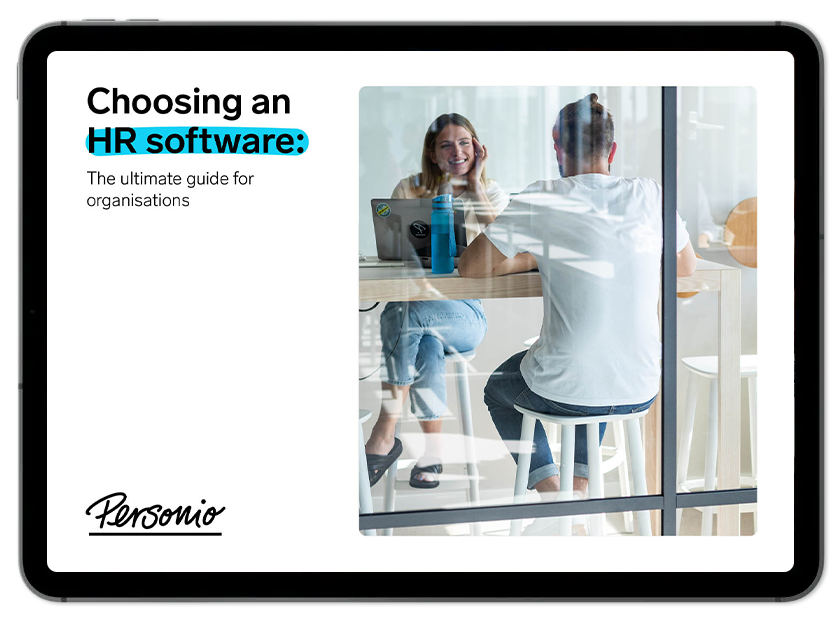
Choosing an HR software
Download our guide to find the ideal HR software for your team.
Download for freeIs an HR management system (HRMS) right for your business?
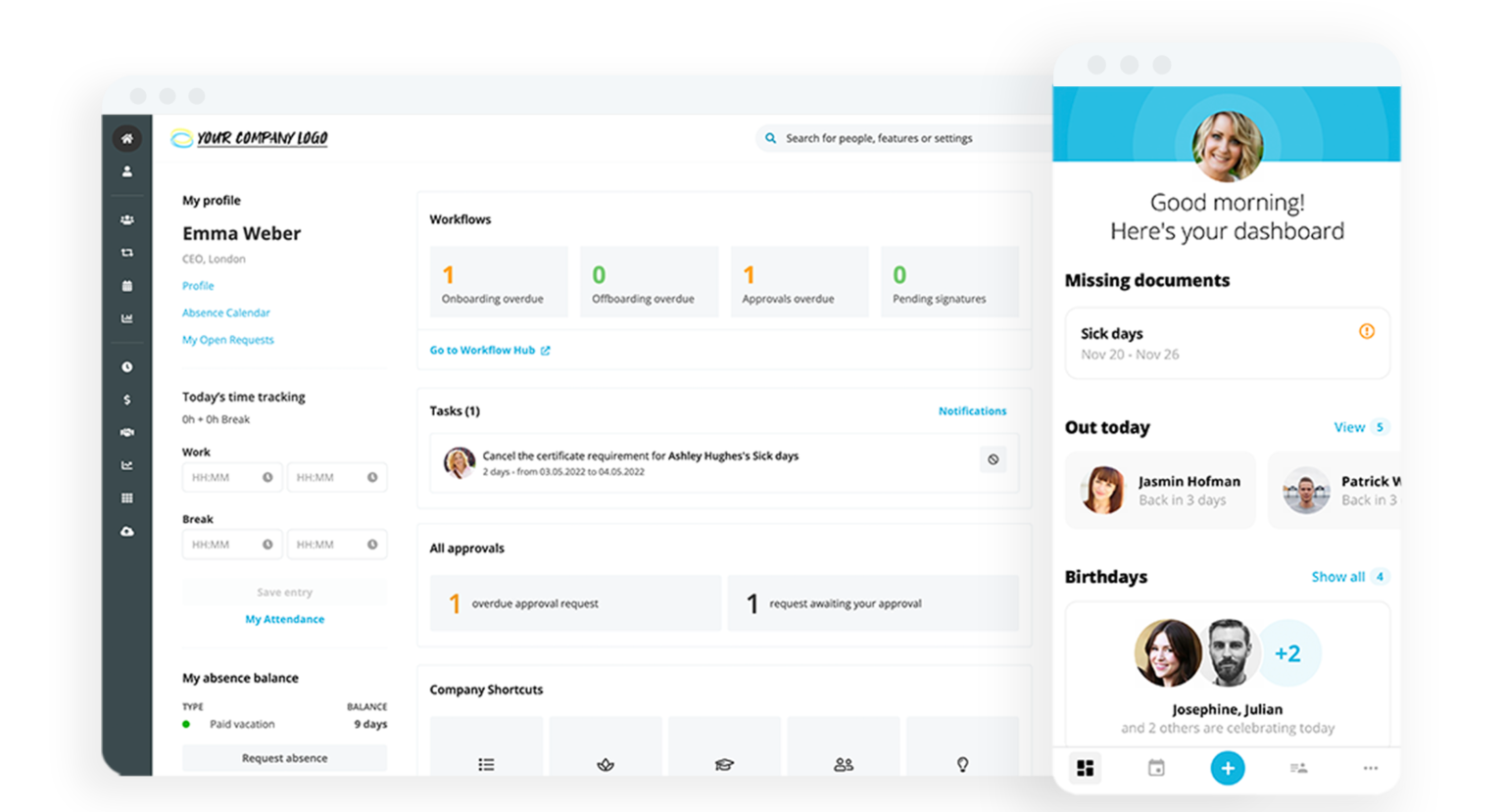
A human resource management system (HRMS) streamlines HR tasks, makes employee data accessible to those who need it and delivers analytics that help your business make better personnel decisions. In this article, we help you choose an HRMS platform that has all the right features to support your business. Here is how to find your best fit.
An all-in-one HR software to help upgrade your people operations: Discover Personio today.What is an HR management system (HRMS)?
A human resource management system (HRMS) is a centralised platform for storing employee data, automating routine HR tasks and analysing data to inform business decisions. Useful throughout the employee life cycle, an HRMS can be used from recruitment to performance all the way through to offboarding.
What is the difference between HRIS and HRMS?
Terms like HRIS and HRMS are often used interchangeably. The truth is a lot more complicated, but in general HRIS is a more basic system than HRMS.
Comparing an HRIS to an HRMS is a lot like comparing a filing cabinet to a digital workspace. Both will systematically file your important data, but HRMS goes a step further by giving you greater tools to analyse that data and draw insights.
If your business is still relying on spreadsheets or paper files, implementing an HRIS can be a great step forward. Look to an HRMS when you’re ready to invest in more substantial tools that will help lead your personnel decisions with data-driven reporting and analytics.
What features should an HR management system have?

An HRMS platform can cover a number of functions, but keep an eye out for platforms that will support you in four key areas: talent management, HR management, reporting and analytics and scalability.
1. Talent management
As your business grows, it is vital that you support talent through every growth stage. This begins with talent acquisition. Look for options to streamline your job posting and advertising efforts, then track candidates so no one falls through the cracks.
After hiring, look for features that keep performance reviews on topic and on time. Continue supporting employee growth with targeted training opportunities.
2. HR management
Save time and headaches with HRMS features that streamline and automate HR tasks. This starts with managing new hires. Look for features that smooth the onboarding process and automate gathering new hire information. Keep track of employee time and manage absences with features that give employees self-service access to manage their details.
Automated holiday approval processes can save time, while automatic leave accrual calculations keep everyone aware of available balances. Make sure your HR data is secure and compliant on the HRMS platform. Keep all of your employee data in one place and look for options to save time with standardised templates.
3. Reporting and analytics
The real strength of HRMS platforms lie in their reporting and analytics features. Whether you want to stay on top of absence trends, identify which job search platforms are sending the most applicants, or check out how employee salaries have changed over time, HRMS reporting and analytics tools can deliver the insights you need.
Keep your reports secure with options that limit which reports each employee can access. Look for reports that update regularly to ensure you’re receiving the most accurate insights.
4. Scalability
HRMS can benefit your business from the very first hire. However, you likely don’t need as many detailed reports and complex features when you are just starting out. A key feature that benefits companies of all sizes is the option to scale up as your business grows.
Personio scales pricing to start with essential functionality for small businesses and grow to support UK SMEs. This makes it easy to start benefiting from HRMS features now, and build up later as your business grows.
Should should a great HR management system do?
Feature | What it does |
|---|---|
Talent Acquisition | Create and distribute job postings across multiple job search platforms. Track candidate status within the hiring pipeline from sourcing to extending an offer. |
Onboarding | Gather new hire documentation. Guide new hires through their first days and weeks. |
Digital employee files | Store and organise employee data and forms in one central platform. Assign access rights to ensure only the right people can access employee data. |
Legal compliance | Collect and report required employee data to government entities. Maintain employee data in compliance with data privacy laws. |
Payroll administration | Automate payroll calculation and pay stub creation. |
Benefits administration | Give employees access to select their benefits. Automate benefit deductions calculations. Track benefit usage for individual employees and across the organisation. |
Learning and development administration | Track training attendance and completion rates. Publish optional training opportunities to encourage enrolment. Add calendar invites or reminders for trainees. |
Leave and attendance tracking | Provide employees with self-service access to request leave or view their leave balances. Calculate available leave balances by employee and coordinate return to work plans following long-term leaves. |
Time tracking | Track employee time for payroll calculations. Track overall hours put into defined work projects. |
Performance management | Templates and reminders help ensure routine performance reviews are conducted on time. Track performance goals and progress. |
Data integration | Integrate with existing software to automatically pull in data for things like expenses, benefits costs and more. |
Reporting | Evaluate organisation progress toward goals and evaluate personnel spending. Automate routine reports to track progress over time. |
Who benefits from an HRMS?
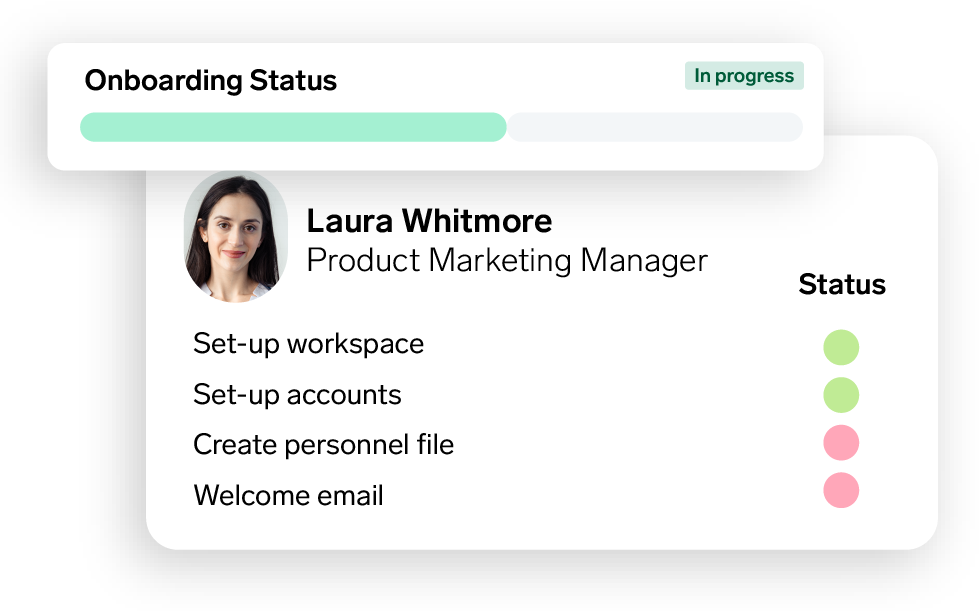
An HRMS is applicable across your organisation, not just in HR. In fact, every person in the business will touch the system at one time or another. HRMS users can be broken down into three groups: employees, line managers and HR managers.
Employees - Employees typically use an HRMS to manage their employee data and access self-service features. Through the system, they can directly update contact details, emergency contacts and banking information. Employees can also use an HRMS to check available vacation or sick leave and submit requests for time off.
Line managers - An effective HRMS will help line managers stay on top of employee needs and encourage effective performance management. Line managers can often approve leave requests right in the HRMS. Time can also be tracked, allowing line managers to set and confirm working hours.
HR managers - An HRMS supports HR managers by automating routine tasks, maintaining records and delivering HR reports and analytics. For example, HR managers use HRMS to manage talent acquisition, document management and employee files, matters of HR compliance and being able to make data-driven decisions with reporting and analytics.
Half a decade of insights on employee experience
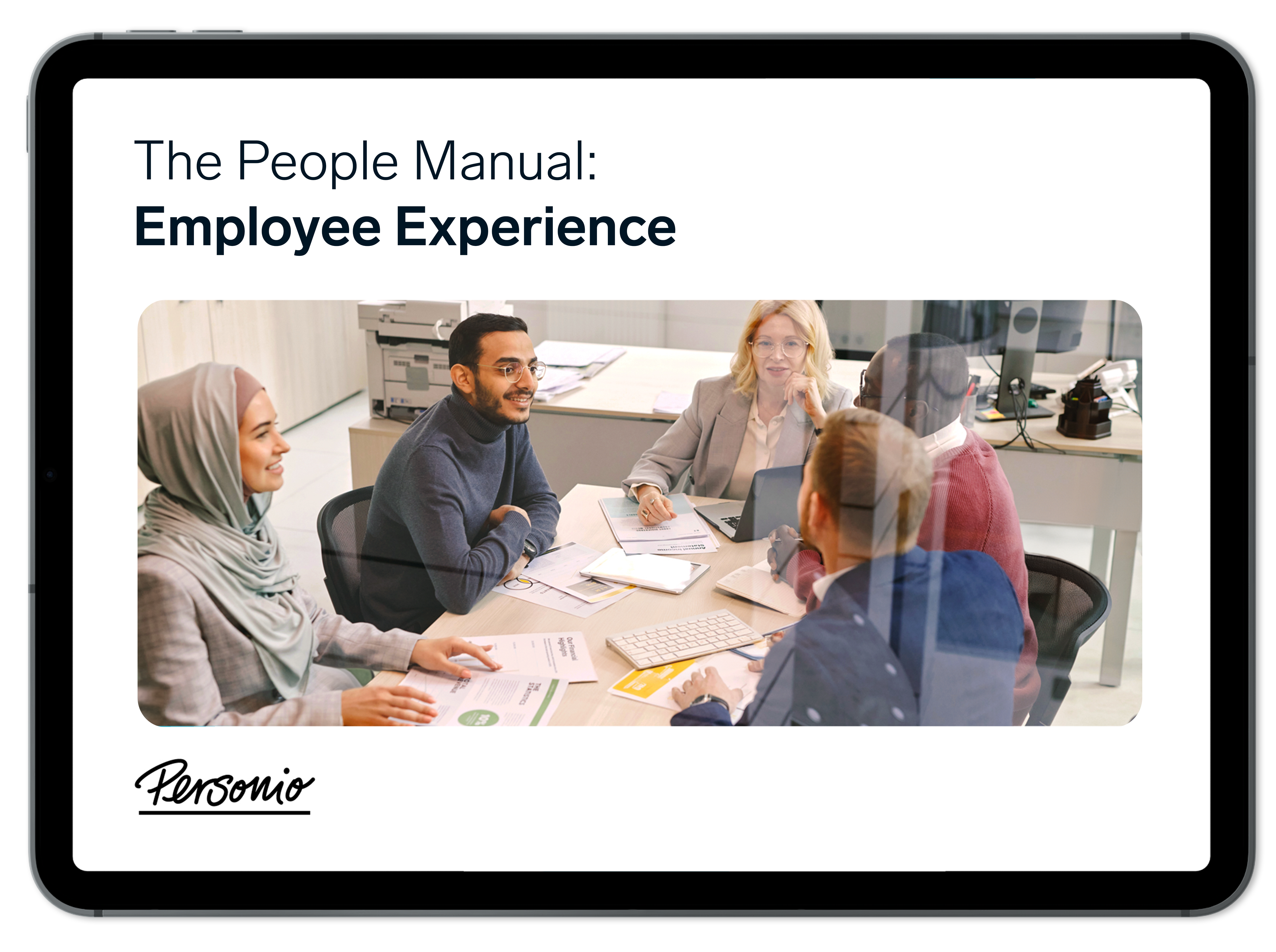
Our "People Manual" covers all things related to employee experience and developing initiatives that result in more engaged employees. Grab your free copy right now.
Download It TodayHow does an HRMS work?
Most HRMS platforms operate on cloud-based software. It is common to have customisation options to select the features and integrations which best meet your business needs.
The HRMS streamlines HR tasks by automating information gathering, offering template forms and generating reports. It also gives employees self-service access to submit their own information, make changes to their information or make requests for time off or other adjustments.
Personio: HR Processes That Bolster Employee Experience

All your HR processes, in one place, to help your employees find success and your HR department find time for strategy. Learn more about how Personio’s holistic HR software can help your organization today.
How It WorksWhat are the main benefits of an HRMS?
Benefit | How it helps |
|---|---|
Data accuracy | HRMS platforms reflect updated data in all linked locations, eliminating the need to manually remove outdated information. This makes it easier to provide accurate compliance reports and update company policy documents. |
Communication | From staying in touch with job applicants, to guided onboarding and transparent performance evaluations, HRMS platforms make it easier to communicate across the organisation effectively. |
Cost savings | Eliminates the need for manual data entry, and reduces the overhead needed to create and maintain employee data files or run personnel reports. |
Personio: An ideal HRMS for your needs
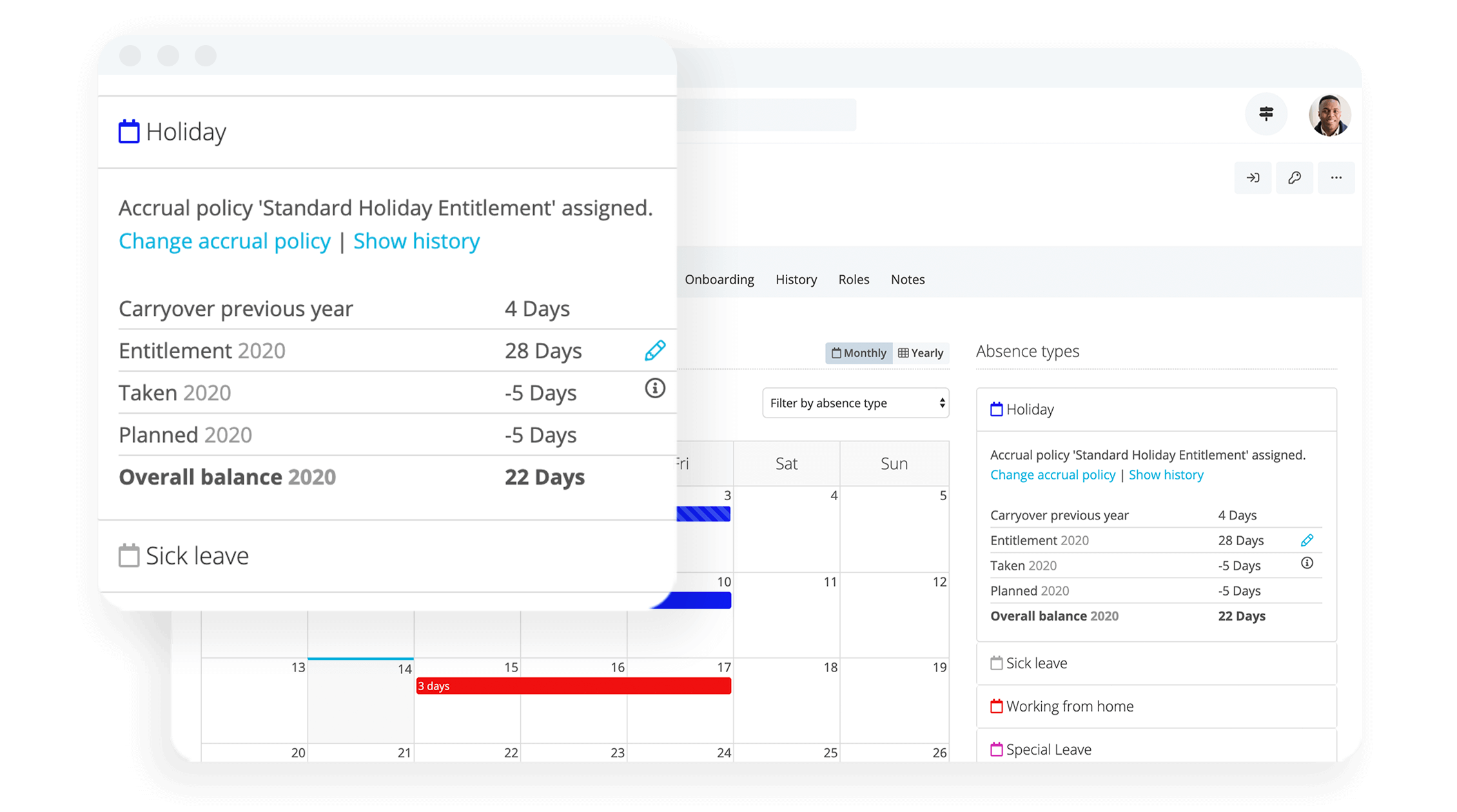
Personio is designed to be the ultimate HR management system (HRMS) for organisations in the UK. It offers a comprehensive suite of tools that streamlines HR processes, enhances employee experience and drives organisational efficiency.
Here’s why Personio stands out as the ideal HRMS for your team:
Streamline every HR process: Personio covers the entire employee lifecycle, from recruitment to offboarding. This all-in-one solution ensures that all HR processes are managed seamlessly, reducing administrative burdens and allowing HR teams to focus on strategic initiatives.
Centralised Employee Files: Keep all your HR data secure and accessible in one place. Personio’s digital employee file feature ensures that important documents and employee information are always up-to-date and easily retrievable.
Efficient Time Tracking: Personio integrates HR data with working hours to improve efficiency and compliance. It supports accurate payroll calculations and provides reliable data on employee working hours.
Simplified Absence Management: With Personio, booking leave is a breeze. Employees can request time off with a single click, and managers can easily track absences across the organisation. Automated holiday approval processes and workflows further streamline this process.
Detailed Reporting and Analytics: Gain instant access to key metrics and reports with Personio’s robust analytics tools. Track headcount, salary data, absenteeism, and more to make data-driven HR decisions.
On top of that, Personio offers fast implementation and quick benefits. Its intuitive interface and comprehensive features ensure that your HR team can start seeing improvements in efficiency and productivity almost immediately.
Personio is already trusted by 15,000 companies in the UK and Europe, including companies like Mindful Chef. To hear it from Sarah Thomas, People Lead at Mindful Chef, "One of the greatest things about Personio is the constant improvements… I invested in it 12 months ago, but we are getting new tools and functionalities almost every day. Personio is not one static product, it’s evolving and becoming even better every day."
Ready to learn more? Start a free 14-day trial of Personio now, or book in time with one of our HR experts today.
